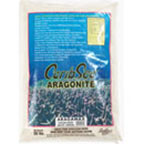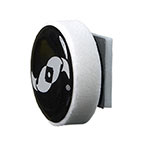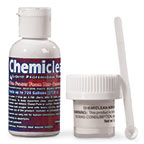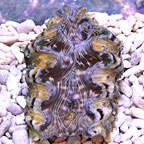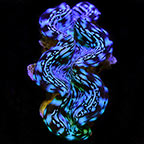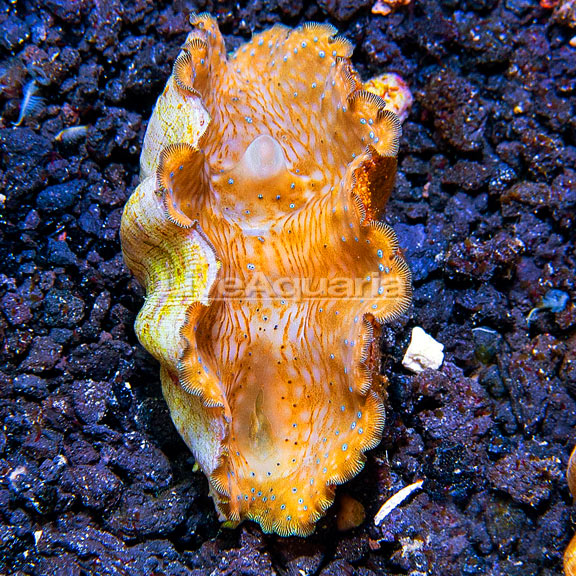

Additional locales and sizes may be available!
Additional locales and sizes may be available! Email me when availableQuick Stats
What do these Quick Stats mean? Click here for more information
What do these Quick Stats mean? Click here for more information
Overview
The Gigas Clam is also known as the Giant Clam. In fact, its species name gigas is the Latin word for giant. This is the largest clam in the Tridacna genus with specimens growing well over 3 feet in length in the wild and weighing hundreds of pounds! The shell of an adult Gigas Clam is not as symmetrical as its cousins (T. maxima, T. squamosa and T. derasa) making it the only Tridacnid unable to completely close its shell when mature. In the wild, Gigas Clams are often found living on reef flats and shallow lagoons typically on sand or coral rubble.
The ideal conditions for the aquacultured Gigas Clam is a large established reef aquarium with bright lighting achieved with T-5s, powerful LEDs or the more intense metal halides. To maximize the growth rate of your aquacultured Gigas Clam, it is imperative to maintain a high pH, alkalinity, and calcium levels and to keep phosphate and nitrate levels as close to zero as possible.
The aquacultured Gigas Clam requires intense lighting to thrive as they contain the symbiotic algae called zooxanthellae. Smaller aquacultured Gigas Clams can be sensitive to very intense lighting when first introduced as their mantle is much thinner than larger specimens. For this reason, care should be taken to properly photo-acclimate newly introduced aquacultured Gigas Clams to your existing reef aquarium lighting in a similar manner to newly introduced stony and soft corals. Set your aquacultured Gigas Clam on a small rock or in a plastic dish with coarse substrate at the bottom of the aquarium. Over time, the clam can be slowly moved up higher in the aquarium where it can receive direct light.
In addition to high lighting conditions and near pristine water quality, the aquacultured Gigas Clam benefits from strong, intermittent water flow within the aquarium. This is best accomplished with a wavemaker and multiple powerheads. For continued good health, the aquacultured Gigas Clam requires the addition of calcium, strontium, iodine, magnesium supplements, as well as trace elements.
The photosynthetic symbiotic zooxanthellae algae hosted within aquacultured Gigas Clam satisfies the majority of its nutritional requirements. However, the aquacultured Gigas Clam will benefit from supplemental feedings, especially when small, in the form of micro foods designed for filter feeders. Offer phytoplankton and other micro-foods.
We recommend:
AlgaGen Acartia tonsa
AlgaGen Pseudodiaptomus pelagicus
AlgaGen Parvocalanus crassirostris
AlgaGen PhycoPure™ Reef Blend
AlgaGen Decap'd Brine™
AlgaGen Rotifers
Approximate purchase size:: Small: 1-3/4" to 2-1/4"; Medium: 2-1/4” to 2-3/4”; Large: 2-3/4” to 3-1/4”



